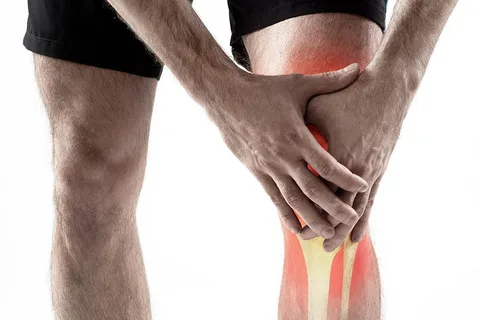
How to Take Care of an Inflamed Knee (And When to Seek Help)
Knee swelling happens when too much fluid gathers on or near the knee joints. Some individuals refer to this as water on the knee, but doctors refer to it as an effusion. Home remedies can sometimes help reduce swelling (and the discomfort it causes). Sometimes it can need seeing a doctor for medical care.
Symptoms of a Swollen Knee
- The skin around the kneecap is puffy
- The knee is stiff and it’s difficult to bend or straighten it
- It’s painful and bearing weight is difficult or impossible
- Redness or warmth
Chronic swelling, also known as persistent swelling, can weaken bones, damage joints, and degrade cartilage.
What Brings on Knee Swelling?
Although there are several reasons why the knee could swell, injuries frequently play a role. Fluid accumulates around the knee as a result of ligament damage, particularly to the anterior cruciate ligament (ACL). Fluid accumulation can also be brought on by fracturing bones, tearing cartilage, and excessive usage.
On the other hand, swelling can also be brought on by various underlying illnesses such osteoarthritis, rheumatoid arthritis, infection, gout, pseudo-gout, bursitis, cysts, and tumors.
Home Treatment for Swollen Knees
- Before deciding on a course of therapy, it is crucial to speak with your doctor. Over-the-counter anti-inflammatory drugs can help treat mild episodes of knee swelling if your doctor recommends them. Usually, knee osteoarthritis, non-septic knee bursitis, or a mild accident is to blame for these situations.
RICE may also be effective. Rest, ice, compression, and elevation, or RICE.
- Rest: Rest for at least 24 hours to give the joint enough time to heal.
- Ice: Three to four times a day, applying ice for 20 minutes can help reduce swelling and speed up recovery. It’s crucial to avoid applying ice to the skin directly.
- Compression: To reduce swelling, wrap the knee with an elastic bandage, but make sure it is not too tight.
- Elevation: Elevating the knee can help minimize swelling by decreasing blood flow to the region.
With RICE, swelling often goes down in one to three days.
When to See a Doctor
It’s necessary to consult a doctor if the swelling doesn’t go down after one to three days of employing the RICE treatment.
Additionally, if any of the following symptoms appear, notify your doctor right away:
- The knee is severely swollen or has a pronounced abnormality
- The knee cannot fully straighten or flex
- The knee is severely painful
- The knee feels like it will give out or cannot support any weight at all
- The skin near the knee is hot or red
- A fever
- Swelling has not gone down after three or more days
Making an appointment with a specialist is usually a smart idea if you experience discomfort or persistent knee swelling. There’s no need to do surgery right now. We are experts in cutting-edge non-surgical treatments and can assist you in overcoming knee pain so that you may live your best life without intrusive surgery.




